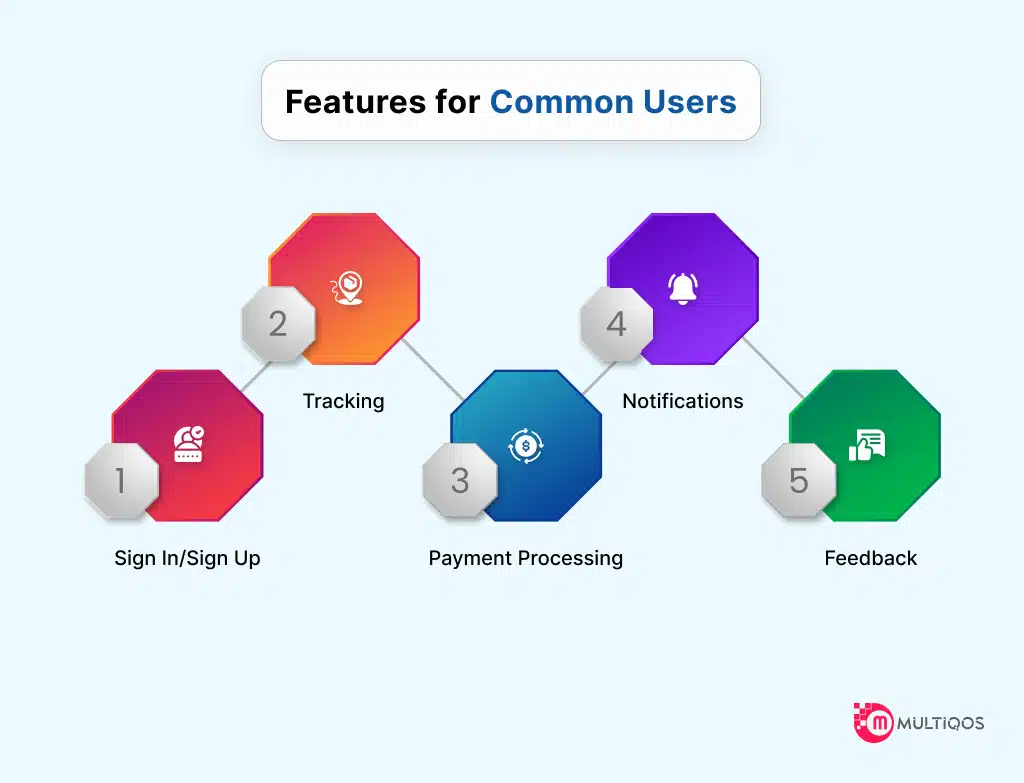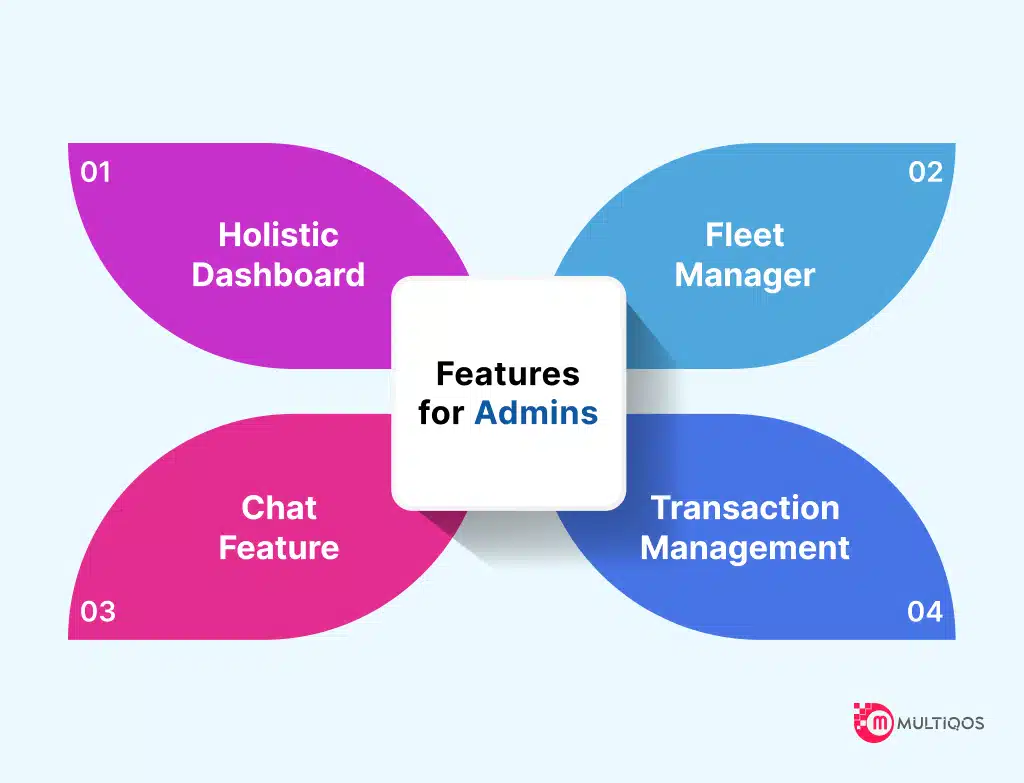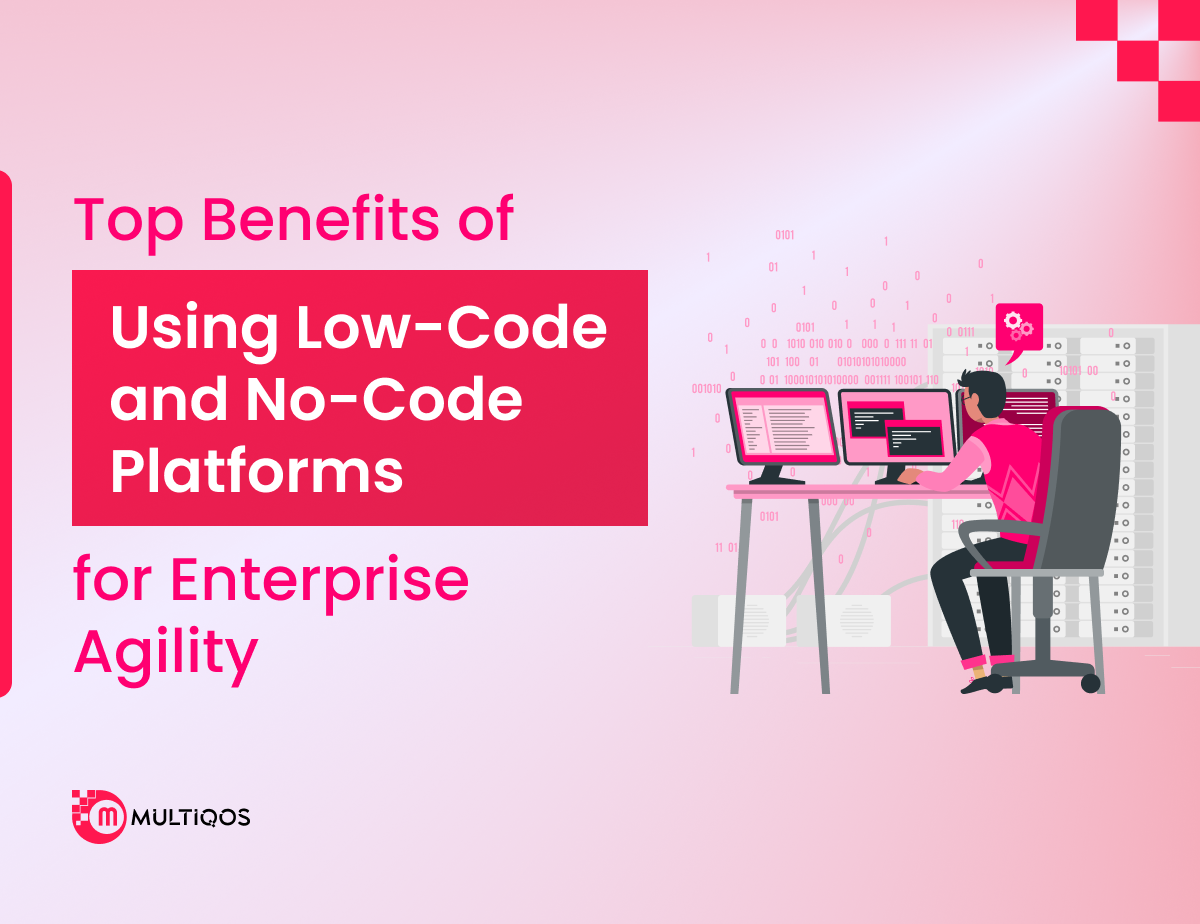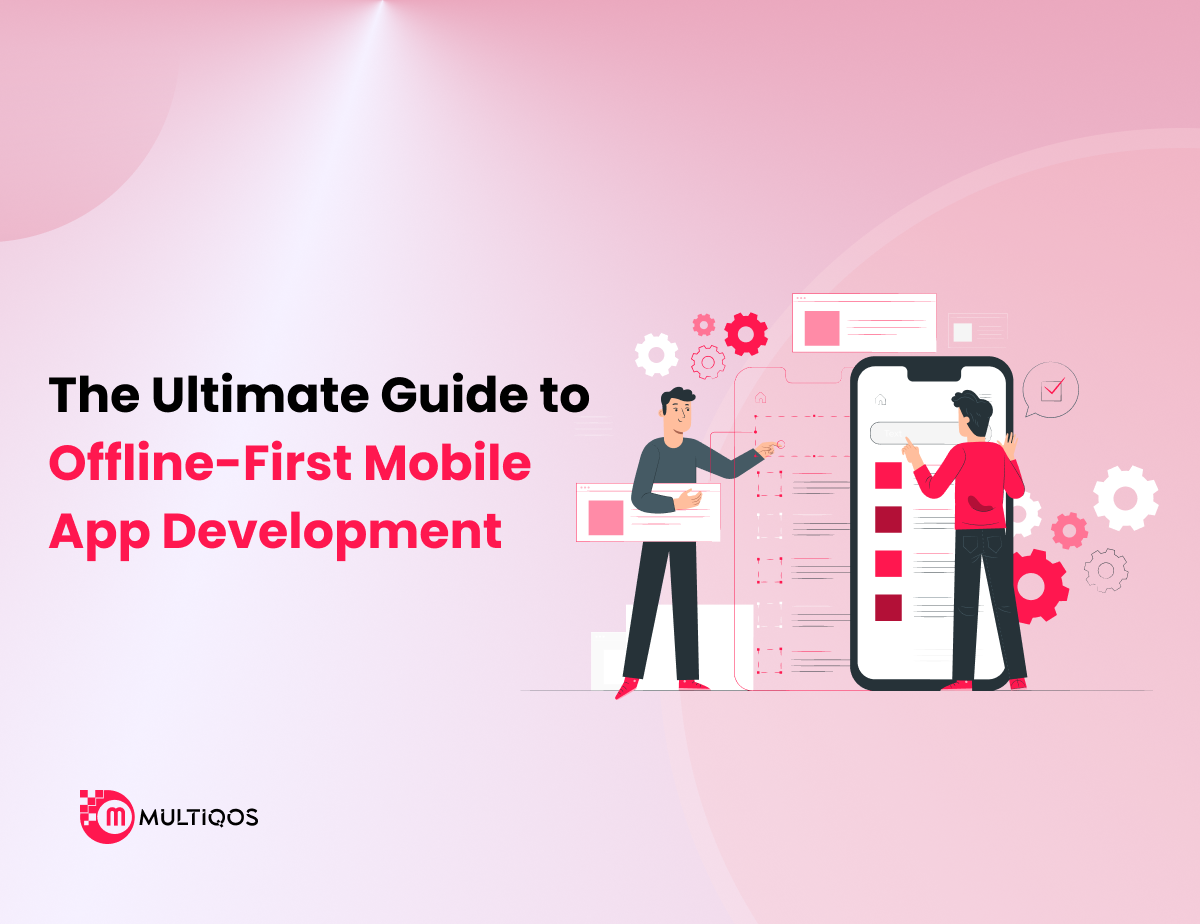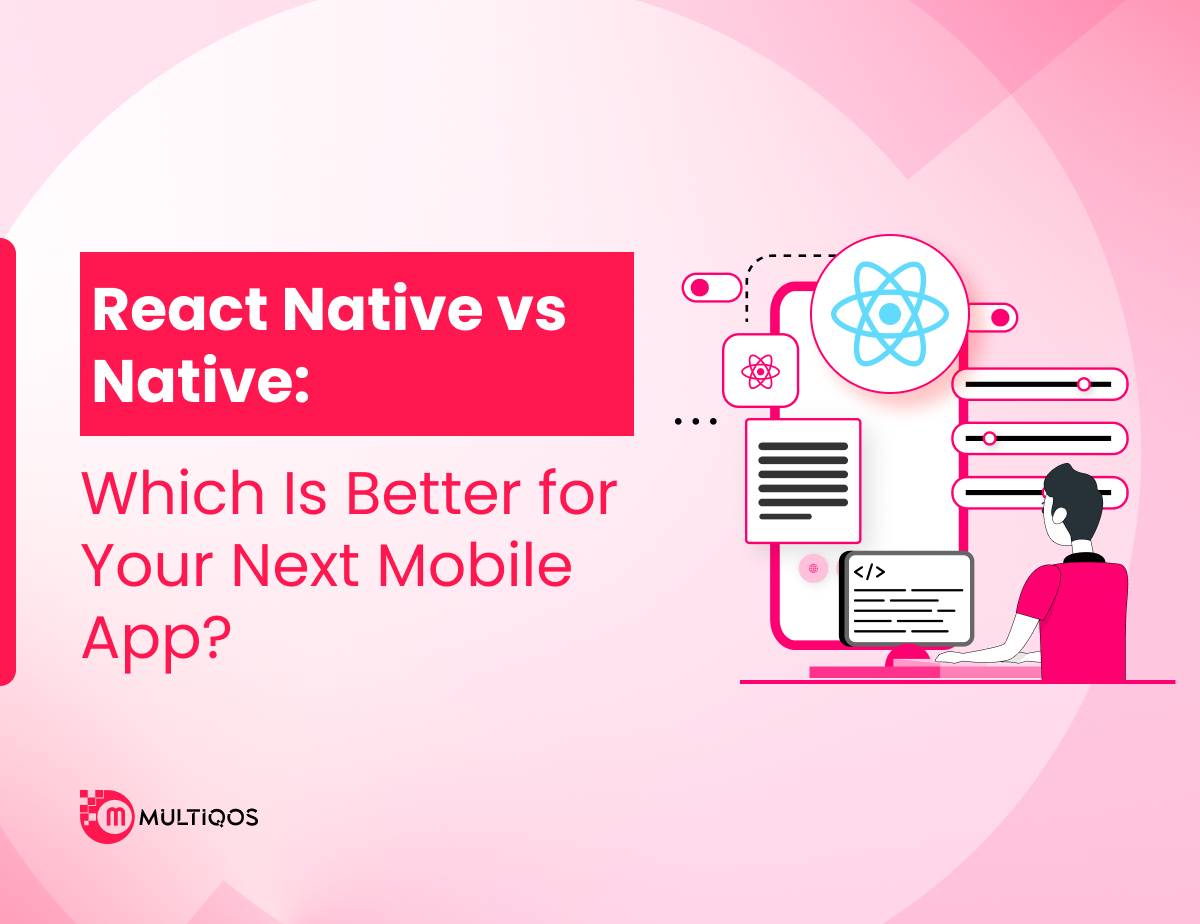A to Z About Logistics App Development: A Beginner’s Guide
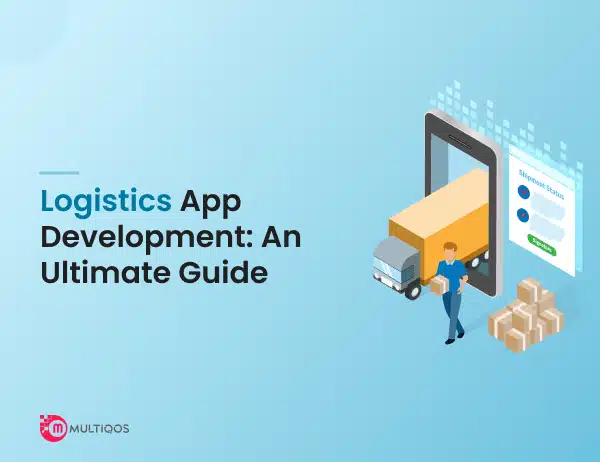
The logistics industry has made new strides post-pandemic shocks. In fact, the industry is experiencing rapid growth, and some credit also goes to the ongoing digitalization in this field. Indeed, digitalization has transformed this industry and provided a more efficient means of handling complex operations.
Companies are investing in software and applications that reduce time, effort, and costs in logistics processes. If you are an entrepreneur or CEO of a logistics company looking to develop your own logistics app to benefit from this digitalization wave, then this guide is for you.
Get everything you need to know about logistics app development is this simple and sorted guide. It will help you understand the necessary features, where to start, and the possible costs to build your logistics application.
Let’s dive into this guide for all the information you need in decision-making.
Understanding the Need for Logistics App Development
A logistics app is an effective tool for companies to manage their supply chain. Such an app is useful in managing inventory, tracking orders, and ensuring efficient delivery of goods. By developing a logistics application, companies can have full control over the different aspects of logistics ensuring smooth delivery of goods from source to destination.
Just imagine a scenario, when one of your trucks left the source location but hasn’t reached the destination yet. Why didn’t the truck reach the destination and where is it now? Alas! You wouldn’t have an idea. Now if there was an app to track the truck and chat with the driver, it would be a lifesaver. This is how developing a logistics app will benefit you in an actual scenario.
So, it is obvious that a lot of companies are interested in investing in logistics app development. On the bright side, data also indicates the same trend as the global logistics software market size is expected to grow at a CAGR of 8% during 2024-2032 to be worth $22.3 billion.
Companies want to develop logistics applications for a myriad of benefits as follows.
Optimize Cost and Time
By building a logistics app, companies can have real-time tracking of delivery vehicles. The location of a vehicle can be easily identified to determine delivery time. Plus, it is possible to determine the optimal route for delivery to reduce time. Selecting an optimal route will help reduce fuel consumption that will minimize the costs of delivery.
Streamline Process
Building a logistics application will help companies streamline their supply chain processes. For example, the app will provide visibility into delivery schedules, inventories, order status, and more. Consequently, the company will promptly respond to the changes in demand and supply. It will be able to quickly procure goods and dispatch them on time to meet the demands.
Efficient Warehousing
Companies can manage warehouses more efficiently with tools to control stocks and order fulfillment with a logistics application. It simplifies day-to-day operations that improve accuracy and minimize costs.
Minimize Paperwork
Paperwork takes a lot of time and effort which can increase the costs of managing operations. However, companies can digitize these operations with a logistics application to reduce paperwork. It will also speed up operations and reduce the administrative burden.
Types of Logistics Apps You Can Develop
There are different types of apps that can solve specific challenges in the logistics industry. It could be a web-based app (web app) or a mobile application (Android app or iOS app or hybrid app).
You can develop a type of logistics app that fits your business needs the best. Moreover, you can also invest in customization to tailor the functionalities to meet distinct requirements. There are lots of ideas to implement on your project when it comes to customization.
However, you must avoid common mistakes in app development to come up with a great solution for customers. Let’s check out the different options for logistics app development for you.
Real-Time Tracking Apps
Do you want app users to track their shipments, orders, or goods in transit? You need a real-time tracking web or mobile application. Such an app will provide functions to get real-time updates about goods in transit. The app can even show the location of the shipment.
This type of logistics web or mobile application uses GPS technology coupled with advanced systems to provide real-time status. The app can provide precise updates about the shipment, order, or goods in transit giving status minute by minute.
These apps are quite useful in logistics as they bring transparency with continuous monitoring of shipment journeys. It provides useful information to users about shipment delivery status.
Fleet Management Apps
Managing a fleet of delivery vehicles can be chaotic without proper information and updates. Indeed, logistics companies need constant updates of their delivery vehicles to ensure timely dispatch and delivery of goods.
This is where your company can benefit from a fleet management application. Such an application can help your company manage every aspect of your fleet and boost productivity. It provides information like fuel consumption, vehicle location, maintenance schedules, maximum payload, and more.
All this information is useful in maximizing the usage of your fleet of vehicles. You can determine the availability of vehicles for different shipments and manage the logistics operations efficiently.
On-demand Logistics Apps
This type of logistics application is the best choice for a company that focuses on customer-centric services. On-demand logistics fulfill customer needs by offering impromptu shipment or transit services. It’s like offering logistics services on demand of the customers.
This type of application enable companies to cater to the needs of customers whether individuals or businesses. Examples of these services include ride-sharing for goods, parcel delivery, and courier services.
Also Read: On-Demand Logistics App Development Cost
Warehouse Management Apps
Warehouses consist of a large amount of goods and finding a specific one can be like searching for a needle in a haystack. Hence, organizing and tracking goods is critical for warehouse management. But a paper-based system will only add to the misery of piles of papers.
Therefore, a warehouse management app is an effective tool to efficiently manage all goods. Indeed, the app can provide goods location within the warehouse, help track inventories, and simplify order processing.
These apps can leverage barcode scanning, real-time tracking, and automated record entry to smoothen the flow of goods in and out.
What are the Essential Features for Logistics App Development?
The right combination of features will play a critical role in the success of a logistics mobile application or web-based application. Moreover, a typical logistics app is a complex piece of software composed of UI/UX and intricate code. Typically, a logistics application has three interfaces for the admins, drivers, and users.
Hence, the features of the app are divided into three categories: Admin features, user features, and driver features. Let’s check out these features in detail below.
Features for Common Users
Let’s start with the features that common users of your logistics will require to perform the actions they want.
-
Sign In/Sign Up
The first thing your application needs is new user registration or sign-in functionality. There should be a simple and quick sign-up process. Besides signing in through user ID and password, you can also allow users to sign in via social logins or single sign-on (SSO) which simplifies the process.
-
Tracking
Tracking is an essential feature that will allow users to track their shipments. It not only provides transparency but also builds trust between your company and the customers. With this feature, users can check the real-time status of shipment and find the estimated time of delivery/arrival.
-
Payment Processing
You need to integrate a secure payment into your application to allow users to process payments within the app. Users can easily pay fares of shipment through their debit or credit cards, e-wallets like PayPal, and online banking.
-
Notifications
Users need updates about their shipments and it can done with the use of push notifications. Hence, your logistics app needs a notification feature to provide real-time updates about shipments. For example, a user will have an alert through notification when a shipment is about to be delivered.
-
Feedback
Taking user input on your service is useful for improvement and to know your downsides. Hence, implementing the feedback and suggestion feature will enable you to get such input. This feature will allow you to hear users directly and seek improvement opportunities.
Features for Drivers
Drivers will use the app to update their location and the status of shipments. So, the following features are required for them.
-
Driver Registration
Just like users, drivers have to register on the logistics app to verify their identity. It will help a company verify that only legitimate individuals are accessing their platform. The app may allow registration by inputting the required details and creating an ID with a username and password.
-
Driver Profile
With this feature, it is easy to update information for a particular driver. Driver profile provides an instant overview of a driver’s personal information and other details. The information is stored in a database and drivers can access them anytime through the app’s UI.
-
Notifications
Just users, notifications are also important for drivers to know about new shipments assigned to them and many other details. The push notifications generated by a logistics web or mobile application will help drivers know about orders, changes in scheduled orders, and more. Besides, they can also get notified about messages from customers or admins.
-
Delivery Screen
It will help drivers track orders and deliveries. They can view a list of upcoming orders and deliveries they have already completed. The driver can further tap on a scheduled delivery to check out customer details like name, address, delivery time, phone number, etc.
-
Electronic Proof of Delivery
It is an electronic document that proves that the delivery has been completed. By implementing ePOD (Electronic Proof of Delivery), you can ensure transparency and security.
Features for Admins
Admins are responsible for assigning orders, managing drivers and vehicles, tracking maintenance schedules, communicating with drivers and customers, generating reports, and more. Hence, there are high-level features that admins need. The admin dashboard has essential features needed for the smooth functioning of your logistics business. Let’s see the features.
-
Holistic Dashboard
The admin needs a dashboard that provides every control and detail they need. For example, the dashboard should have quick options to see drivers that are available for new shipments. Hence, they need a dashboard with a holistic view of options.
-
Fleet Manager
It will allow the admin to manage and control a fleet of vehicles. The admin can perform tasks like tracking the location of a vehicle, viewing vehicles that are due for maintenance, monitoring the fuel levels, and more. It is essential for optimal fleet performance and to reduce costs.
-
Transaction Management
Admins have to manage various expenses that must be recorded. With the transaction management feature, the admins can manage and track these expenses within the application. Plus, they can also approve or disapprove driver expenses. The app provides a simple way to keep track of different transactions.
-
Chat Feature
With the chat feature, the admins can stay in touch with the drivers. Plus, it can also help them resolve customer issues. You can also integrate a chatbot that can enhance the overall experience in customer service. Moreover, drivers or customers can easily contact admins to fix various issues with the chat feature.
How to Develop a Logistics App?
Creating a custom logistics web/mobile application is challenging due to the intricacy of the development process. Moreover, it involves various processes like designing, development, testing, deployment, and maintenance. You need expert assistance to develop such an app. You can choose a reliable web or mobile app development company to complete the project.
The following are all the steps of a typical logistics app development process.
Brainstorm and Define USP
Gaining customer trust should be a priority for your business that can be done with a value-driven solution. Hence, you should first begin by brainstorming and identifying the unique selling points for your logistics application. These USPs will reflect in your app’s functionality that will attract end-users.
Start your research by discovering the desired user persona and come up with an idea that will fit their needs. So, there is a lot of research before developing a mobile app or web app for a logistics business.
Choose the Right Tech Partner
Congrats you have a unique app idea to revolutionize the logistics business. Now what is next? Well, the next phase is to transform your idea into reality. However, you need an energetic team to implement the idea. So, hiring a logistics app development company is the next step in your journey.
It is a firm with domain-specific knowledge and brings a wealth of experience to the table. The professional team at the firm will help to develop your mobile app or web app for logistics business.
Build Technology Foundation
Choosing the right tech stack is crucial for developing scalable, performant, and a secure application. It involves various decisions from choosing the right framework or programming language to building a robust architecture. Let’s see the tech stack for developing a logistics app.
| Front-End | HTML, CSS, JavaScript, Angular, ReactJS, jQuery |
| Back-End | PHP, Python, Node.js, Laravel, .NET |
| Databases | MySQL, MongoDB, PostgreSQL, Cassandra |
| Server | Nginx, Apache, |
| Cloud | AWS, Azure, Google Cloud Platform |
| Mobile App Frameworks | Flutter, Xamarin, React Native, Ionic |
| Mobile Programming Languages | Java, Kotlin, Swift, Objective-C |
| Payment Gateway | Stripe, PayPal, Amazon Pay, Skrill |
| Push Notifications | Twilio, Push.io |
| Navigation | Google Maps API |
| Analytics | Spark, Hadoop, BigData |
Start with an MVP
MVP or Minimum Viable Product is a type of app that offers basic features that early adopters want. You can minimize the risk by developing an MVP. It is less costly and useful to validate your idea. You can then develop your app iteratively based on users’ feedback by implementing more functionality.
UI/UX Design
User interface and user experience design is an extremely important step in developing a logistics application. Indeed, many digital solutions have failed due to poor UI/UX. Make the user interface intuitive and appealing with the right balance. UI/UX design involves creating different screen for your apps and implementing widgets.
Development
It involves implementing the core logic of the application, setting up databases, and creating the backend. The core is developed using IDEs and the backend is implemented with the desired server.
Testing
Every build of the logistic app needs to go through stringent quality testing by hired mobile app developers or web app developers. The testing involves identifying bugs and errors that could result in unexpected behavior. Plus, it is also tested on security and performance parameters.
Deployment
Hurray! With the above steps, your will be completed. After this, you need to make it available to users. This is the deployment step in which the app is released by publishing on an app platform like the App Store or Google Play Store or making it online.
What is the Cost to Build a Logistics App?
The cost to develop a logistics app can be between $30,000 – $120,000 or more. However, it depends on multiple factors such as:
- Complexity
- The number of features
- Customization requirements
- Time in development
- Location of the development team
Since the cost depends on many factors it can vary accordingly. However, by determining these factors and understanding the possible costs, you can get a rough estimation. You can contact us for a free cost estimation. We will understand your project requirements and provide the right estimates based on it. The following shows rough estimates for apps based on complexity.
| Complexity Level | Estimated Cost | Time Frame |
| Simple | $30,000 – $50,000 | 3-6 months |
| Medium | $50,000 – $120,000 | 6-9 months |
| High | $120,000 – $200,000 | 9-18 months |
Final Note
Logistics app development is a step towards transforming your vision into reality. So, you cannot take the wrong step. With a partnership with a reliable logistics application development company, you can turn this vision into a successful reality.
MultiQoS is the tech partner you can trust. With our years of expertise in developing apps for a wide range of businesses, we can bring the best to the table. We are not simply a service provider, we work as a partner by guiding you and helping you in every way possible.
Let’s contact us and make something impactful.
FAQ on Logistics App Development
Typically, it may take around 3-9 months in developing a logistics app. However, the actual can vary because there are many factors that can affect the time frame. One factor includes the complexity of an app. The more complex an app is, the more time it will take in development.
Indeed, developing a complex app is time-consuming because designing and implementing the logic will require a lot of labor hours. Another factor in development time is customization. It involves integrating more features and subtle design changes. It will take a longer time to develop.
Yes, we can help you integrate your app with existing systems including ERPs, TMS, or CRMs. You can convey your requirements to us during development and we will create the necessary interfaces to interact with these systems. We can also integrate your app with the use of APIs.
Companies in the logistics business can use the app to streamline operations and manage the supply chain. The app can automate various operations, minimize errors, optimize processes, and help to reduce costs. Plus, it enhances user experience which will increase your business reputation and trust.
A transportation app is used to manage the movement of goods or people. However, a logistics application has a wider scope. It encompasses inventory management, warehousing, fleet management, and other operations. Hence, a logistics app works on more comprehensive tasks than a transportation app.
Get In Touch


